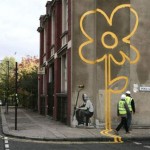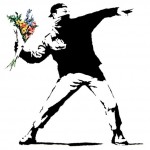The post How to Shoot a Self Portrait to Support your Brand Identity appeared first on Digital Photography School. It was authored by Charlie Moss.
Personal branding has become more and more important over the last few years. As photographers, we often carefully curate the image that we present to the world, even as amateurs. Our brand and image are usually closely linked to the kind of photographs we shoot.
Photographers will often carefully curate the look of their website. They’ll spend hours contemplating the images and text that they use to express their photographic hopes and dreams. They want their websites and online portfolios to give people an insight into their creative working process and the kind of photos that they intend to take.

I often start with natural light when shooting self-portraits. It’s how I prefer to shoot most of the time!
And yet, I often look at the ‘about me’ page on a photographers website, portfolio page, or social media, and front and center is a photograph of them taken by someone else. The image on your “about me” page, or your portfolio profile picture, is a great piece of marketing real estate. You can use this space to express yourself and tell a story. So why let someone else take that photo?
So what’s the solution? Shoot a self portrait! Put your own work in that valuable space, and express yourself and your photographic style clearly and coherently – even on your “about me” page.
What is a brand identity?
Now more than ever, photographers are the face of their brand. Almost everywhere you go on the internet, you’ll have the option to upload an ‘avatar’ image that represents you in digital format. This avatar image is a space to tell the world something about you and your photography.
A brand identity is the way you present your work to the world. It’s the visual and textual elements that differentiate you from other people in the minds of your audience. Since photographers are usually the main (and often only) person in the creative process when it comes to image-making, they are often the embodiment of their brand.

A single large beauty dish for this portrait reflects one of my usual lighting styles.
Generally, for a photographer, their brand identity will be heavily tied up with their style in which they usually work. A photographer who creates beautiful fine art portraits inspired by the Old Masters may have a brand identity that embodies timelessness, heritage, and classical values. On the other hand, someone creating cutting edge contemporary portraits may embody qualities such as innovation, diversity, and courage.
The key is to get your values into the images you’re shooting. You’ll probably find it happens naturally once you’ve been shooting a while and have developed a style. However, creating a self-portrait for your “about me” page and avatars is a good time to brainstorm what your work is about. The challenge is to see if you can capture these ideas in a single shot.
Got a fear of shooting self-portraits?
Self-portraits are hard. They’re hard technically, creatively, and emotionally. It’s no surprise really that photographers often shy away from self-portraiture. Portraits can be hard enough to get right when you’re shooting other people, let alone when you’re photographing yourself!

Experimental tricks like this shallow depth of field combined with fairy lights can add an artistic side to a self-portrait while covering up any perceived flaws in the way we look.
That aside, a self-portrait or two is also a great way to improve your skills, try new things, and make sure that the entirety of your personal branding works together coherently. You are likely to be your most patient subject, and if you set aside a day to create your self-portrait then you have time to get it exactly right – even if you’re trying something new.
Go light on the retouching. When you’re working on a self-portrait in post-processing, it’s easy to be super-critical of everything you don’t like about yourself. Stick to your usual workflow and only retouch as much as you normally would.
Start simple
If all else fails, start like you would any other portrait. If you’d usually start with a simple two-light headshot in your studio, then give that a go first. Review your images and then make adjustments. Once you’ve found a shot that works then try something a bit different. You might find a completely new direction for your work!

This self-portrait was shot with natural light against a grey paper background. Often simple pictures can be really effective!
It’s easy to think about self-portraits in the context of a studio, but don’t limit yourself! Take your camera outside into natural light if that’s a place you enjoy taking portraits usually. You can even buy stands to hold reflectors so that you can take advantage of all the usual light modifiers that you’d use.
But if you’re going out on location to shoot self-portraits, consider taking someone with you. It’s easy to get distracted while shooting self-portraits out and about. Having an extra pair of eyes can help protect you and your equipment. You can also get your assistant to hold the reflector or a flashgun too!
And if you want to really show off what you do, consider an environmental portrait in your own studio and surrounded by your tools of the photographic trade.
Think about the context
Where is your self-portrait going to be placed? Will it be on your own website or will it be on social media?
In traditional media, you usually want to have the subject facing the viewer or looking towards the center of the book or magazine. There’s a reason for this. It helps direct the readers focus back to the content rather than off the edge of the page into the wider world. It’s a simple trick to help keep the readers’ attention where you want it.

The “about me” page on my portfolio website showing my self-portrait in relation to the text block.
You can apply this to your website too. Think about the placement of your self-portrait on the page of your website. Does it fit better on the left or the right of the “about me” text? When you’re working out your poses, keep this in mind and make sure you’re either looking straight ahead or towards the text block.
It’s possible to break the rules, of course, but make sure you shoot both options if you’re going to be adventurous!
What about the practicalities of self-portraits?
If your camera connects to a phone app that can assist with exposure and focusing, then make sure you take full advantage of that. Self-portraits used to be a lengthy process that involved sitting my mannequin on a chair in my studio to get the focus and lighting right.
Now I can see everything in real-time, including exposure and focus adjustments, using the Fujifilm Cam Remote app that connects to my camera.

Using the Fujifilm Cam Remote app to set up the lighting and exposure, and the resulting self-portrait a few minutes later. (Lighting was a single large beauty dish).
If you don’t have a camera that connects to your phone, get yourself a remote trigger and consider shooting tethered to a laptop so that you can see the images as you trigger the camera. You can look at software such as Lightroom or Capture One Pro for tethering. That way you can make small adjustments to your pose and settings as you go along to make sure that you really nail everything and create your best work.
Using a good tripod will also save you some frustration when you’re shooting portraits. Balancing the camera on a stack of books can work (believe me, I’ve done it before), but a tripod will help you compose a shot more effectively. Don’t forget to try unusual compositions too. Raising the camera up above your eye level can be very flattering while shooting from down low can create a powerful pose.

A profile self-portrait recalls the kinds of images that you often see historically on coins and medals. Don’t be afraid to experiment with unconventional poses when photographing yourself.
Keep your standards high
And lastly, be as thorough and rigorous with your standards as you would when shooting a portrait of anyone else.
Make the effort to do your hair, press your clothes, and get a great expression. Just because it’s a self-portrait it doesn’t mean it’s an excuse to be lazy and “fix it in post.”
I’d love to see how you get on with shooting your self-portrait to support your brand and expressing your values through them. Drop a comment below with the results, and don’t forget to update your avatar with your new portrait!

The post How to Shoot a Self Portrait to Support your Brand Identity appeared first on Digital Photography School. It was authored by Charlie Moss.


















You must be logged in to post a comment.